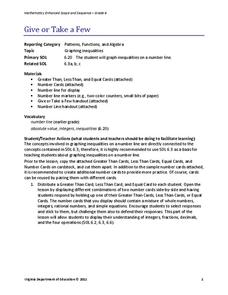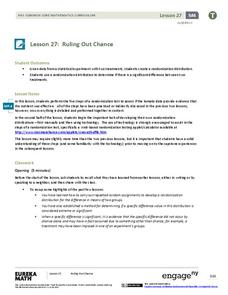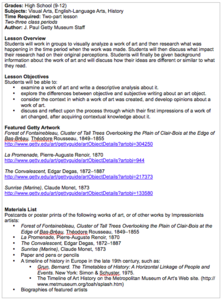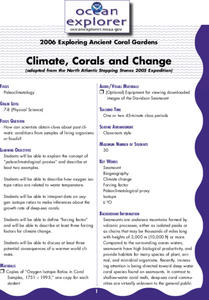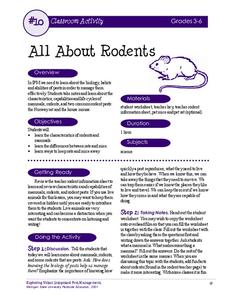Curated OER
I Dream in Pictures and Words (Day 1)
Students are introduced to the art of Rene Magrritte and Marc Chagall. Using the internet, they discover the characteristics of Surrealist artists and write a paper. They share their findings with the class and answer discussion questions.
Curated OER
Renewable Energy Sources
Place learners into groups to research and present different renewable energy sources. As individuals listen to the class presentations, they take notes and then write a persuasive article defending the form of energy that they feel...
Curated OER
Great Expectations By Charles Dickens: A Classic, Or Just a Novel?
Seventh graders read the novel Great Expectations by Charles Dickens. They consult Media Center and online sources as they conduct research needed to write an essay that answers the question, "Is Great Expectations a classic, or just a...
Curated OER
Little Red Hen
First graders listen to the story "The Little Red Hen". They buddy read the story and then illustrate their own interpretation of the story on story paper. Students then use AlphaSmart to type their stories in sequential order.
Curated OER
Stay Focused on Long Division
Students utilize a checklist in order to help them stay focused on long division problems.
Curated OER
Parrot in the Oven: Socratic Seminar
To conclude a study of Parrot in the Oven: Mi Vida, class members sharpen their critical thinking skills by engaging in a Socratic seminar discussion of Martinez's novel.
Curated OER
Parrot in the Oven: Letter to a Character
Readers of Parrot in the Oven: Mi Vida place themselves in the story and craft a persuasive letter to a character in Victor Martinez's National Book Award-winning novel.
Classics for Kids
"Mars" from The Planets
Gustav Holst's The Planets provide young musicians an opportunity to examine how composers can create a suite: a collection of smaller pieces grouped to explore a single topic. After listening to "Jupiter," they examine "Mars" in detail,...
Virginia Department of Education
Give or Take a Few
Young mathematicians extend their knowledge of rational numbers on a number line to graph inequalities by first using number cards to compare rational numbers. They finish by using similar reasoning to graph inequalities on a number line.
Curated OER
Parrot in the Oven: Anticipation Guide
Get readers thinking about the major themes in Victor Martinez's award-winning novel, Parrot in the Oven: Mi Vida by asking them to agree or disagree with the prompts on an anticipation guide and to discuss their responses with class...
Novelinks
Nightjohn: List-Group-Label Strategy
Encourage readers of Nightjohn, Gary Paulsen's young adult novel about slavery set shortly before the Civil War, to develop their categorization and organizational skills with a strategy that asks them to list all the words they can...
EngageNY
Ruling Out Chance (part 3)
Pupils analyze group data to identify significant differences. They use simulation to create their own random assignment data for comparison.
Curated OER
The Last Lecture: Exit Slip
Here's an exit slip activity that asks readers of The Last Lecture to identify three lessons from "Part III: Adventures and Lessons Learned" that resonated for them.
J. Paul Getty Trust
Historical Context: Discovering a Painting
Class members are presented with the image of a painting and asked to record their first impressions and analysis. They then research the time period in which it was painted and discuss how their research impacted their first impression...
Curated OER
The Wednesday Wars: Question Answer Response Strategy
Readers of The Wednesday Wars respond to model "Right There," "Think and Search," "On My Own," and "Author and You" (QAR) questions before crafting their own for class discussion.
Alabama Department of Archives and History
What Were They Thinking? Why Some Some Alabamians Opposed the 19th Amendment
To better understand the debate over the 19th Amendment, class members examine two primary source documents that reveal some of the social, economic, racial, and political realities of the time period.
National Gallery of Canada
Make a Parfleche
Examine American Indian art and culture by observing contemporary art and creating original pieces. Class members discuss artwork included in the plan and use these images to help inspire their own work, which should represent their...
California Academy of Science
Rapid Brainstorming: How Can We Conserve Our Water Resources?
Water covers around 75 percent of the earth, yet humans struggle to find enough fresh water to live. The fourth of 10 lessons focusing on Fresh Solutions requires brainstorming. Young scientists consider various problems related to fresh...
Missouri Department of Elementary
Using Negotiation to Settle Difficulties
Negotiating can be a win/win experience if the involved parties apply the skills and techniques offered in a lesson about negotiating to settle differences.
Curated OER
Cancer and the Cell Cycle - Biology Teaching Thesis
Identify the different stages of mitosis and what occurs in each stage with a straightforward biology lesson. Young scientists identify the importance of the cell cycle control in maintaining homeostasis, and then match the correct stage...
Code.org
Algorithms Detour - Minimum Spanning Tree
This optional lesson introduces the class to the idea of a minimum spanning tree. The activity focuses on determining an algorithm that will find the most efficient path in a network to transfer data.
NOAA
Climate, Corals and Change
Global warming isn't just an issue on land; deep ocean waters are also showing troubling signs. Young scientists learn more about deep water corals and the many recent discoveries researchers have made. Then they examine data related to...
Michigan State University
All About Rodents
Get to the know the common house mouse and the Norway rat with an activity that reinforces reading comprehension skills. Scholars read a three-page document detailing key information about mammals, specifically rodents, and use their...
Virginia Department of Education
Matching Representations
Pupils explore the many representations of linear functions by completing a matching activity to connect the multiple representations of a function. They then reinforce the connection as individuals create the different representations...
Other popular searches
- Writing Process Steps
- Four Steps of Writing Process
- Writing Process Steps Web
- 42 Writing Process Steps
- The Writing Process Steps










